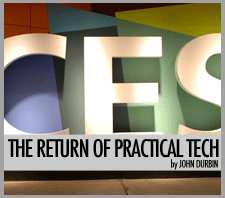A Game Of Shifts (Some 90 Degrees At A Time)
Posted by John Rafferty | April 26, 2012After five years in development, a slew of industry indie awards, and even some polarizing controversy surrounding its creator, Phil Fish, finally launched on Xbox Live Arcade a couple of weeks ago. And despite a growing list of game-breaking bugs, an atypical Friday launch (most new titles release on Tuesday), and Xbox Live’s less-than-friendly-to-indie-titles UI, Polytron’s retro-themed puzzle-platformer managed over 20,000 day-one downloads and a 90 Metacritic score, putting it on par with Limbo, another critically-acclaimed indie darling. Regardless of its faults or praise, however, if you’re taking Fez on its initial appearance, playing it only as the aforementioned puzzle-platformer, then you’re not really playing Fez, and your “Get to the end” achievement actually means you’re only halfway through.
On its surface, Fez is a traditional 2D platformer with an interesting gameplay mechanic – Gomez, the main character, is given the power to rotate his two-dimensional world in three dimensions, 90 degrees at a time, thanks to a magical fez. Doing so (by pulling the controller triggers) reveals hidden doors, platforms, and puzzles in Escher-like variants; all contributing to traversal through the world to find 32 Gold Cubes and “complete” the game.
** Caution, spoilers ahead. **

It’s at this point, once you’ve “finished” the adventure that the true challenge really begins. It’s at this point that Phil Fish and his Polytron team reveal just how insane they may be, and how focused and intent you’ll need to become in order to find and complete all of Fez‘s secrets and truly finish the game. As you begin your “second quest” you start to realize that while the platforming in multiple dimensions is a great mechanic, it’s only a means to the greater ends – it’s a vehicle to shepherd you along to the next puzzle to solve.
Hidden throughout the world you just explored are 32 Blue Anti-Cubes. Whereas all of the previously-collected Gold Cubes were hidden in plain sight, merely requiring semi-skillful platform jumps to acquire, the Blue Anti-Cubes are actually invisible, and can only be exposed through careful manipulation and deciphering of the environment – an environment composed of hundreds of glyphs that are more than just textures. These glyphs actually compose a secret language that you’ll need to fully decipher and comprehend to even have a chance at the game’s 200+% completion percentage.

In a terribly clever twist, the glyphs’ alphabet “Rosetta Stone” is revealed to you in a room where a fox is jumping over a dog laying on the ground, or where “a quick brown fox jumps over a lazy dog” – a phrase most will recognize as the go-to English pangram. With that revelation in hand, and the new ability to see the world in first-person, the game evolves from simple platformer to intense problem-solving-puzzler. It’s a shift that inspires another, as what was once an inherently single player game transforms into a social, cooperative experience.
We tend to think of most game releases as either single-player or multi-player experiences. Of course there are games that include single-player modes alongside multiplayer modes; the Call of Duty series is a prime example, as are most modern first-person shooters. But rarely has a game so expertly misrepresented its true intention while combining core mechanics of multiple genres, bringing together an entire community with a singular collaborative focus.
Sure, if you’re a glutton for punishment or cryptography hobbyist you might attempt this new, completionist journey alone, but even those who relish the pen and paper days of classic adventure games will find an almost overwhelming challenge. Luckily, the internet is full of insane yet focused, and focused yet insane citizens, some of whom happen to be both cryptography hobbyists and gluttons for punishment as well. Almost instantly after the game’s morning launch, Fez had created multiple vibrant, vocal communities, working en masse to piece together the dozens of secrets hidden throughout.
Intense, community-driven puzzle solving isn’t new for the core gaming crowd, or even those committed fans of Hollywood’s summer blockbusters. Games and movies alike have both made extensive use of ARGs, or alternate reality games, to hook an audience and draw them deeper into the forthcoming world through massive, media-melding endeavors necessitating calculated, coordinated collaboration often on a worldwide scale. Halo 2’s “I Love Bees” ARG set the stage for the modern marketing hype-driving variation, and The Dark Knight’s “Why So Serious” campaign capitalized on the formula, recruiting over 170 million players into the mix via online and live events.
ARGs drive collaboration not only for pure brainpower and mindshare in cracking the puzzles, but because so many clues are divulged through cross-media avenues that one person couldn’t possibly be everywhere at once in order to gather all of the necessary intel. Collaboration needs to happen in order to even have a shot at putting all those gathered pieces together.
Fez, on the other hand, makes all of its necessary clues available to anyone who plays the game itself. Yet even with that seemingly inherent advantage, the intrinsically social gaming community turned to its traditional ARG problem-solving solution and collaborated. Some were focused on the game’s word puzzles, their hand-written and computer-generated notes, or cracking the QR codes, while others were set to decipher the meaning behind images actually hidden within the title’s soundtrack by running them through Sonic Visualizer – software that lets you analyze sound files, with very interesting results, in this case. The popular gaming forum, NeoGAF, has a thread that’s over forty pages of pleas for help, puzzle solving, and prognosticating solely dedicated to the Polytron puzzler with one commenter noting: “…this is such awesome puzzle design. When was the last time you remember spending a week on one game? On one puzzle? I’m going to be sad when this is over.” Whereas ARGs usually drive people to play a game (or see a movie), in this case it was the game that pushed people towards ARG mentalities.
Yet, even amongst the collective internet brainpower, the game’s could not be completed with logic alone. Collaboration had netted the necessary pieces (a series of button combinations), but putting them together proved impossible until one contributor built a web application to list every possible computational input. Hours of brute force by hundreds of gamers later, and the monolith had been solved.

We talk a lot about a game’s “water cooler” moments, but rarely do we see an entire game dominate the conversation with such force, especially an “indie darling” retro platformer. Amplified by a kitschy mechanic, unexpected gameplay challenge, and a fervent community, the Fez conversation should continue come time for game of the year considerations.
Image credits: Polytron Corporation and WhySoSerious.com
Leave a Comment
RSS feed for comments on this post · TrackBack URI



